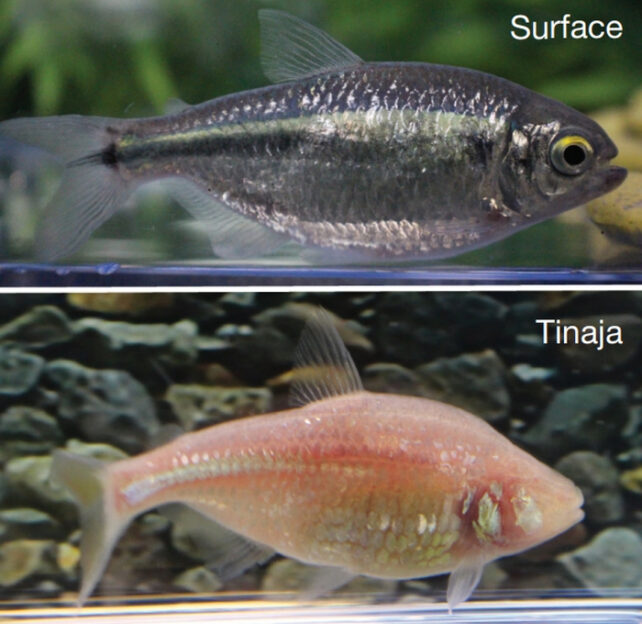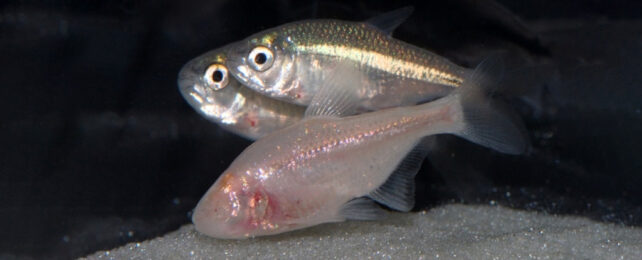A blind fish living within a Mexican cave system's deep, enduring darkness still retains some ability to sense light.
As the cavefish no longer seem to rely on an internal daily cycle and some sleep very little, University College London marine biologist Inga Steindal and colleagues were keen to see if their bodies can still regulate cyclically through time.
Most animals on Earth have an internal clock for this, the circadian rhythm that uses light levels to synchronize our bodies to our planet's day and night cycles. This rhythm is then used to cycle through different biological processes that can dictate our behavior, such as our hunger cycles prompting us to eat and melatonin levels dictating our alert to drowsy cycle.
The Mexican blind cavefish (Astyanax mexicanus) live in a complex of over 30 isolated caves, within which they have each independently adapted to the dark.
Their bodies are extra sensitive to vibrations, allowing them to sense changes in water currents for navigation in compensation for their limited or complete lack of sight. Some have even lost their eyes entirely.

This adaptation occurred despite the fish from each cave evolving from the same species with fully functioning eyes. This ancestral group still lives in the surface waters in the El Albra region of Mexico and some parts of the Southwestern US and parted ways with the cave dwellers between 10,000 and 10 million years ago, depending on the cave. Yet they are all still the same species that can interbreed.
Cavefish are rare, hard to study, and don't do well in captivity, but blind A. mexicanus have shown an unexpected ability to adopt a light/dark cycle when kept in the lab.
Steindal and team took tissue samples from blind cavefish, from three isolated caves, and their surface ancestor embryos and tested the cells in different conditions.
They detected the activation of several molecular clock mechanisms when the cells were exposed to light, even in the cavefish cells.
"Non-visual light detection is retained at a fundamental cell-based level," the researchers explain, although the cavefish cells did not respond as strongly as those cells from surface fish.
While there were some similarities between the fish from the different caves compared to their surface relatives, there were also differences that confirm their biological clock mutations each evolved independently of one another via different molecular mechanisms.
"We have provided proof that despite being blind, cells from the Mexican blind cavefish can detect light and entrain their clocks to a light/dark cycle," Steindal and colleagues conclude.
The team hopes these cell cultures can teach us more about circadian rhythms and provide an easier way to study animal adaptations to dark environments.
This research was published in Proceedings of the Royal Society B.
